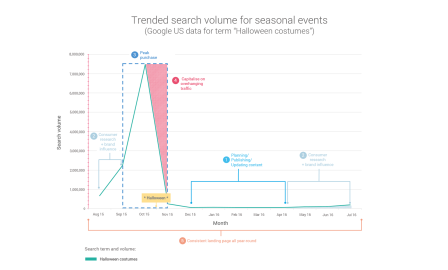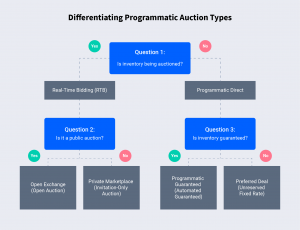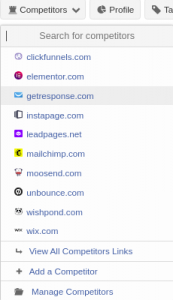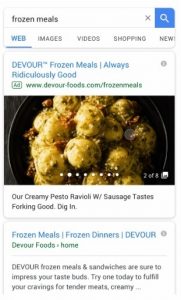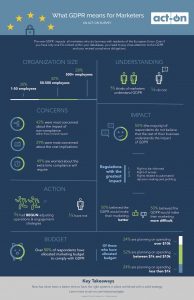Plan a commercially viable marketing and content strategy using search data.

No marketer needs to be told the value of data in informing and measuring the success of a campaign, but search trend data, in particular, can seem overwhelming, especially if content and SEO departments aren’t always joined up or organized efficiently enough to build a solid strategy from a large scope of data.
Search data can be overlooked, or at least not used to its full potential, in planning marketing and content strategies around seasonal events.
As a marketer, you’re constantly challenged with targeting people at the right time. Search trend data not only gives you that insight, it enables you to understand consumer tastes and the seasonality of your offering.
Using search trend data in a new way
Every marketer knows what a typical seasonal search chart looks like, but for argument’s sale, let’s have a look at the one below, which demonstrates the search volume of multiple seasonal event terms. Peaks and troughs are consistent and predictable year on year.

So, how do we use this search trend data for the benefit of SEOs, content, PPC and everyone within the digital department?
We’ve incorporated a formula to decode the value of search trend data, which can form the cornerstone of any seasonal campaign: PIPR — or Plan, Influence, Peak, Repeat.
From observing retailers and e-commerce brands, we’ve noticed that many tend to release their campaign content just in time for seasonal events and are missing out on some big traffic and sales opportunities by doing so.
We’ve found that releasing marketing content a couple of months in advance of the consumer research stage is the best way to continuously maximize ROI, year on year — and we’ve got the charts to prove it!
Let’s start off by focusing on a single year of search volume data for the term, “Halloween Costumes,” which we’ve collected from Google Keyword Planner.
Building a year-round seasonal strategy
It’s vital to know when the research and buying phases are during seasonal events, to be able to capitalize on demand from its inception.
By collating and charting annual search volume data (around event-based search terms) and applying a “Plan, Influence, Peak, Repeat” formula, we can kick off our campaign across all search, marketing and omnichannel activities.

PIPR: Plan, Influence, Peak, Repeat
PLAN
1) Planning and publishing content
- Optimize content (theme pages around most valuable terms, build link infrastructures, create social media activity, source advocates, apply relevant technical SEO and so on) and build authority in Google in time for the consumer research period.
- Review any content you already have on the themes you’ve identified. It’s a common mistake to create new seasonal content every year instead of updating existing relevant content. If both new and old pages are themed similarly, it could lead to internal cannibalization.
- Releasing content a season ahead is commonplace in most e-commerce businesses — unless an evergreen landing page already exists.
INFLUENCE
2) Consumer research and brand influence phase
- Build marketing and content strategies around the time when consumers are researching, rather than when they are buying.
- Publishing content too close to the purchasing period means target audiences may already have been influenced elsewhere during their research.
- If you want to apply PPC to your content and landing pages at peak times of year, it makes more commercial sense to bid during the peak research phase, rather than the peak purchase phase. Not only will this drive more traffic to your site due to higher search volumes, but also, CPCs are often less competitive during these times.
PEAK
3) Peak purchase
- If purchasers have not already been influenced by this point, you could lose the sale to a competitor.
- Even if you’ve done a good job of influencing potential customers during the research phase, it’s still vital to have a strong brand presence at this time.
4) Capitalize on overhanging traffic
When interest is still relatively high, but cooling off, it’s a good time to discount products to clear stock, or to redirect traffic to another relevant landing page. If there is a straight drop after peak interest, however, you may want to focus your resources elsewhere.
REPEAT
5) Evergreen landing page strategy
- Unlike paid media, organic search needs time to build traction. Creating and continuously updating a seasonal landing page throughout the year with evergreen content and enduring terms can ensure you garner links and power over time.
- Google tends to prioritize these types of long-term pages over new URLs — so don’t delete the page!
- What’s more, you’re likely to vastly improve your PPC Quality Score when it comes to bidding if you have an established landing page.
Three types of trend charts
Not all trends follow the same pattern. We’ve defined the three main types of seasonal search trend that you can expect to find when translating your search volume data into a year-round content strategy. These include: Single Sharp Peaks, Double Peaks and Single Extended Peaks.
These trends will vary in duration, depending on the nature of the seasonal event, and that will determine the length of each (PIPR) marketing activity. For example, a Single Sharp Peak will have a shorter “Influence” phase, whereas a Single Extended Peak will present a greater opportunity for influencing and building sales, as people are researching earlier in anticipation of the event.
Single Extended Peak — Example: Christmas

Double Peak — Example: Travel

Single Sharp Peak — Example: Black Friday

Finding the key
The above charts were all created with search volume data sourced from Google Keyword Planner and Google Trends.
While these tools have recently been subject to a lot of changes and scrutiny based on their accuracy, they still prove to be some of the best benchmarking tools and are definitely workable.
Volume versus value: traffic for traffic’s sake?
Google’s tools are, indeed, useful for revealing search volume and trend insights, but we need to remember that volume doesn’t necessarily mean value.
A business can seemingly be doing well for a lot of big search terms, but if they’re not focusing on converting terms, then it’s little more than an exercise in self-promotion.
That’s why we need to make sure we’re focusing our annual content strategies (like the ones we see above) on the search themes and terms with the most potential for conversion.

At Pi, we use an Organic Value Score to average all of the metrics used to determine a keyword’s intrinsic value and potential to convert, including (but not limited to) CPC, competition value and search volume. We then adjust this value ever so slightly, based on the themes that we know to be in line with a business’s key objectives. As a result, content strategies are focused not only on the most commercially valuable business terms, but also the ones with the most relevance.
What does WINNING look like?
Keeping tabs on the competition can be extremely useful in informing your seasonal campaign.
But before you start upcycling competitors’ strategies, you need to find out whether they’ve been a success.

Market share based on high-value search terms throughout peak travel seasons
You can’t exactly get your hands on your competitors’ revenue and ROI, but you can view their daily or retrospective search performance to understand who’s achieving the greatest market share in your industry for the most organically valuable terms.

Daily SEO tracking reveals who’s dominating the festival season.
Stability is typical of top performers, and these brands above are getting it right. Daily SEO tracking will help you to discover the leaders in your industry, pinpoint which of their content gains traction in the SERPs and analyze what they have in common. You can then appropriate these working competitor formulas to boost your own content.
Be confident, not complacent
Most purchases begin with a stimulus of some kind; some are predictable, some are spontaneous. We’ll never be able to predict when someone gets a hole in their shoes, for example, but we can take a good stab at anticipating when they’ll be purchasing a pair of flip-flops for their summer holiday.
And that’s why search trend data is such a vital tool in enabling us to make informed, repeat strategic decisions on when to market and sell our products and services.
In saying this, however, we should make a concerted effort to ensure we don’t just rehash the same strategies year after year. It’s still of utmost importance to remain agile and be sensitive to new and emerging consumer demands.
Marketing Land – Internet Marketing News, Strategies & Tips
(53)
Report Post